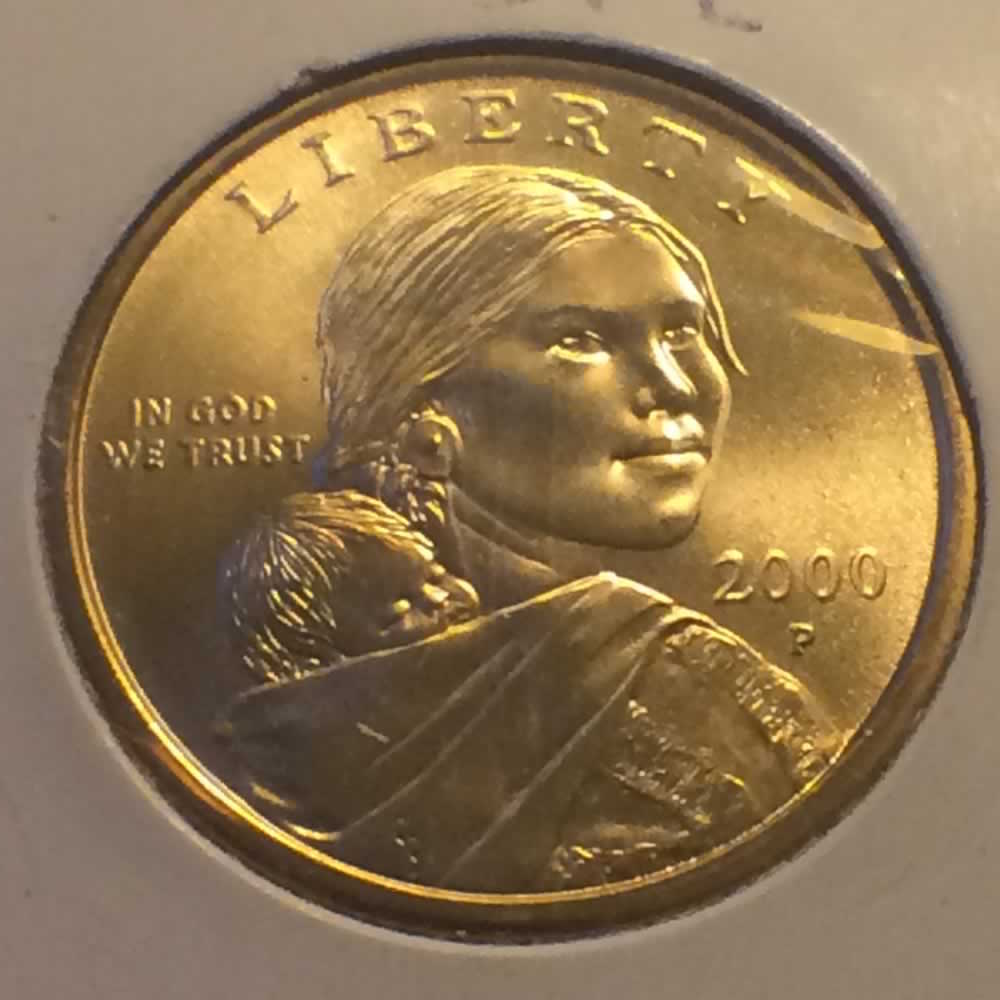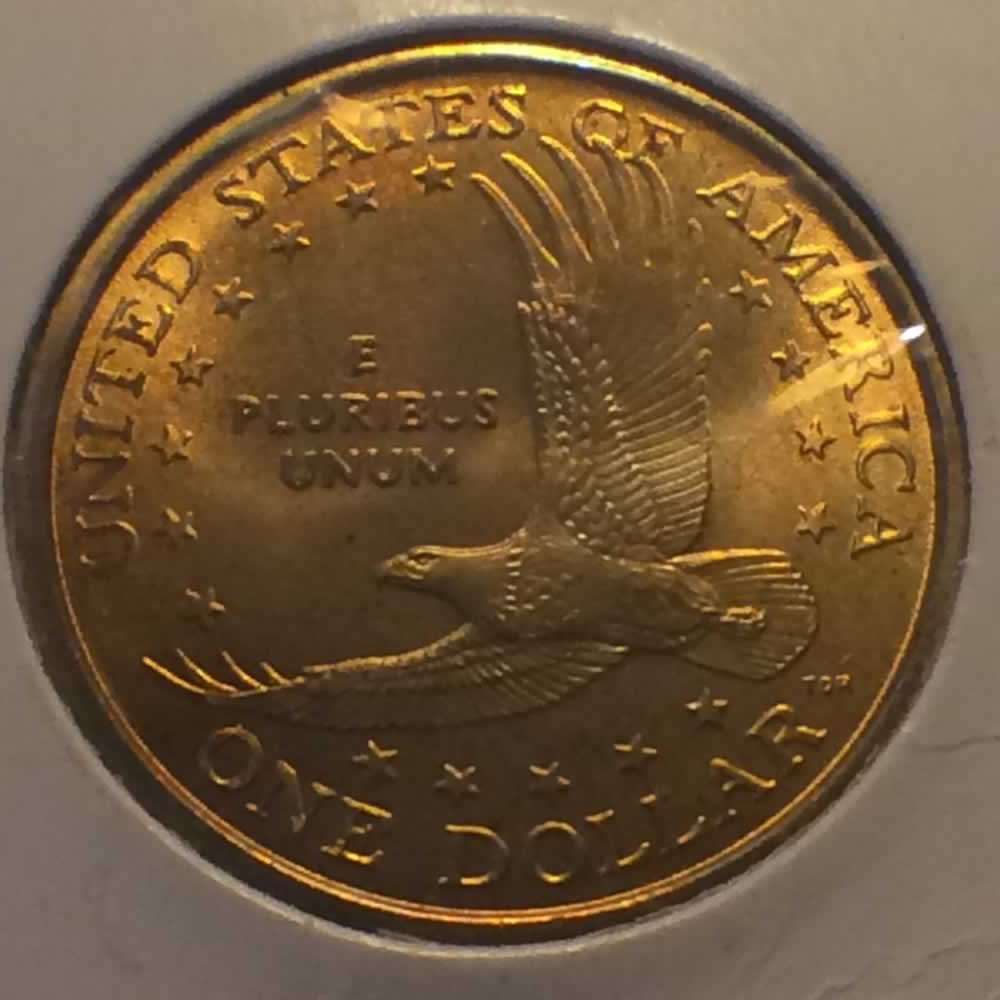Sacagawea dollar
The Sacagawea dollar (also known as the "golden dollar") is a United States dollar coin that has been minted every year since 2000, although not released for general circulation from 2002 through 2008 and again from 2012 onward due to its general unpopularity with the public and low business demand for the coin. These coins have a copper core clad by manganese brass, giving them a distinctive golden color. The coin features an obverse by Glenna Goodacre. From 2000 to 2008, the reverse featured an eagle design by Thomas D. Rogers. Since 2009, the reverse of the Sacagawea dollar has been changed yearly, with each design in the series depicting a different aspect of Native American cultures.
The coin was first suggested as a replacement for the Susan B. Anthony dollar, which proved useful for vending machine operators and mass transit systems despite being unpopular with the public. The Statue of Liberty was originally proposed as the design subject, but Sacagawea, the Shoshone guide of the Lewis and Clark expedition, was eventually chosen.
The new dollar coin was heavily marketed by the Mint in a series of print, radio, and television advertisements, as well as Mint partnerships with Walmart and Cheerios. However, the Sacagawea dollar did not prove popular with the public, and mintage dropped sharply in the second year of production. Production of Sacagawea dollars continued, since 2007 in parallel with the U.S. Presidential dollars. In 2012, mintage numbers were reduced by over 90%, in line with a similar reduction for the Presidential Dollars, due to large stockpiles of unused dollar coins.
The Mint planned to issue the Sacagawea design in 22-karat gold as well, but this idea was quickly abandoned after the Mint's authority to strike the coins was questioned, and the Mint has retained ownership of the few such coins produced. Soon after initial production of the dollar, it was noticed that a few of the dollar coins were erroneously struck with the obverse of a state quarter and the normal reverse.
Initial design selection
Invitations were sent to 23 artists with guidelines as to what their designs should depict. The obverse was to depict a representation of Sacagawea, and the reverse an eagle symbolizing peace and freedom.[6] Another guideline requested artists "be sensitive to cultural authenticity, and try to avoid creating a representation of a classical European face in Native American headdress."[6] In November and December 1998, members of the Native American community, teachers, numismatists, historians, members of Congress, various government officials and others were invited by the United States Mint to review the submitted proposed designs.[8] Six obverse and seven reverse designs were originally selected for further consideration.[8]
After the Mint conducted a series of polls and focus groups, three obverse and four reverse designs were selected as finalists.[8] The Mint received approximately 90,000 e-mails in reference to the design selection process.[6] In response to the large amount of feedback generated, Diehl stated that the internet has "allowed us to conduct a public outreach program of unprecedented scope to measure opinions of the designs."[6] All seven of the selected designs were forwarded to the United States Commission of Fine Arts; the Commission chose an obverse design depicting Sacagawea with her infant son, Jean Baptiste Charbonneau, as designed by sculptor Glenna Goodacre. Goodacre chose Randy'L He-dow Teton to model for Sacagawea, of whom there are no known contemporary portraits, to help the artist capture the features of a young Native American woman.[6] The chosen reverse, designed by Mint sculptor-engraver Thomas D. Rogers, depicted a soaring eagle.
REF
 US 2000 P Sacagawea Dollar ( $1 )
US 2000 P Sacagawea Dollar ( $1 )



